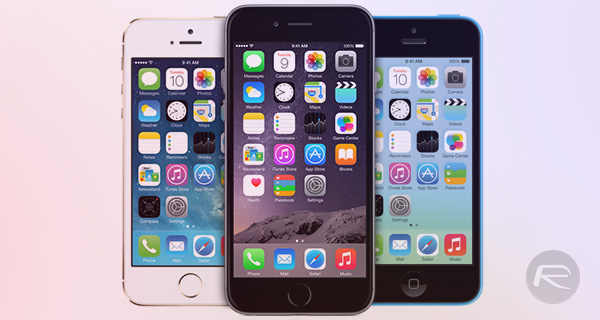A fresh iPhone centric report emanating from Japan is suggesting that Apple will ditch its existing approach to refreshing and upgrading the iPhone product range. The Cupertino-based company has traditionally followed a tick-tock approach to updating the iPhone, meaning that consumers can look forward to a major revamp of the device every two years, but a new report is pointing toward an imminent change, suggesting that Apple will use a number of factors as an influence to introduce a major iPhone change every three years going forward.
If the idea of a tick-tock release pattern doesn’t really mean anything to you, then worry not. The ‘tick’ element represents a major revamp of a particular platform or product. From an iPhone perspective, the iPhone 6 which introduced an entire aesthetic and feature overhaul, represents Apple’s last ‘tick’. The iPhone 6s can be thought of as the ‘tock’ side of things, and can be considered as more of an evolutionary upgrade that keeps the same overall physical design, but introduces a very small incremental changes. Many analysts and consumers would expect the upcoming iPhone 7 to be a ‘tick’, but a Japanese publication is suggesting that this will not be the case.

Apple is now said to take three years in-between full-model changes, which is an additional sixteen months for consumers to wait from now for next major refresh. If Apple is to stick with its current traditional update cycle, then we could have expected a revamp of the iPhone this coming fall when the iPhone 7 is introduced.
This latest speculation – which incidentally doesn’t actually cite any sources as providers of the information – goes some way to actually correlating a number earlier reports that have suggested the upcoming iPhone to be focusing on relatively minor changes like an improved camera and removal of the iconic 3.5mm headphone jack.
One of the interesting things to note here is that the report is suggesting two major reasons for Apple moving to a three-year full-model refresh cycle:
The move is largely due to smartphone functions having little room left for major enhancements. A slowing market is another factor.

On the plus side, it does mean that once the iPhone 7 has been introduced and released into the market, we can start looking forward to changes on a large-scale for whatever device Apple has planned for launch in 2017. That could potentially include the adoption of OLED display technology as well as enhanced 3D Touch interactions with Touch ID being built right into the display, along with all new glass design.
(Source: Nikkei)
You may also like to check out:
- Latest iPhone 7 Schematics Reveal Near-Identical Dimensions To iPhone 6s
- Jailbreak iOS 9.3.2 / iOS 9.3.3 Status Update [Latest]
- iOS 10 Beta Download, Release Date, Features And Rumors Update
You can follow us on Twitter, add us to your circle on Google+ or like our Facebook page to keep yourself updated on all the latest from Microsoft, Google, Apple and the Web.

